

If You Have Teen Gynecomastia, Does That Mean Your Hormones are Abnormal?
No. Hormones are almost always normal with teen gynecomastia. In a study that followed boys with gynecomastia and boys of the same age who did not have gynecomastia over a three-year period, no abnormal hormone levels were found to explain the condition. There was no difference in hormone levels between the groups.

Though very rare in adolescent boys, if hormonal changes are abnormally producing an absolute or relative excess of female hormone (pathological gynecomastia), then a search must be done for some abnormality in the body. This search would include an abnormality or tumor of the adrenal gland or testicles or a genetic condition like Klinefelter syndrome.
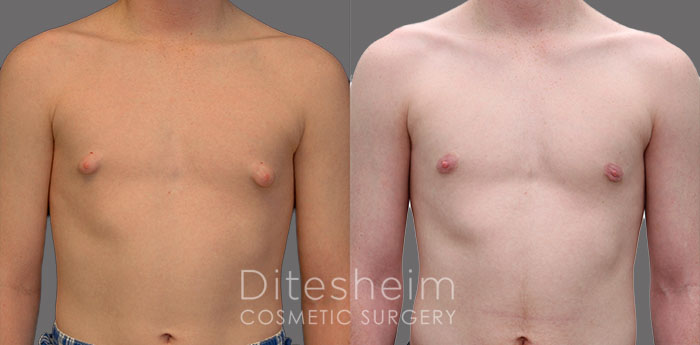
Taking gym supplements or anabolic steroids can abnormally stimulate the body, creating male breast tissue growth. In the image below, a boy was given gym supplements to “build muscle.” Even after stopping the supplements, the teen gynecomastia did not resolve. After surgical treatment, his chest returned to a normal shape.
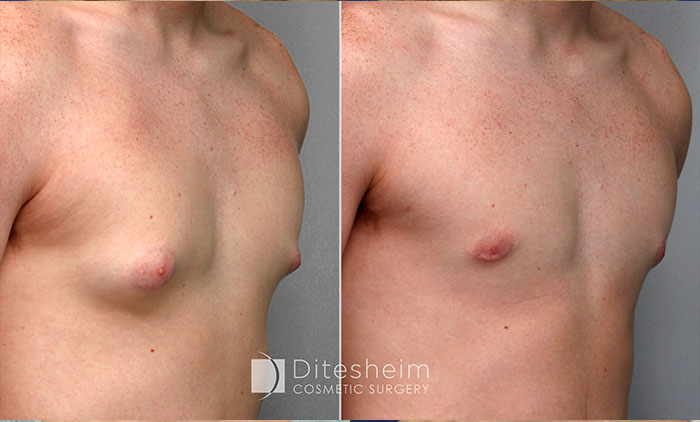
What Causes Breast Tissue Growth in Teens?
During mid-puberty, when pubic hair and testicles are enlarging, there is thought to be a transient flux in hormones. At some point, female hormones are more present than male hormones, and the normally small breast tissue develops under the nipple, causing breast growth and gynecomastia.
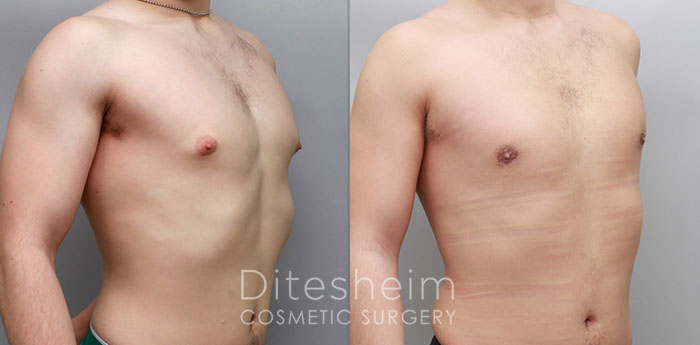
By late puberty (age 17), with a surge in male hormones, the breast development usually regresses. However, for unknown reasons, about 10% of boys age 17 will have persistent gynecomastia in one or both breasts that will not go away without surgical intervention.
When Should a Teen Get Male Breast Reduction Surgery?
How is a young boy whose body is changing each year to explain to peers that the fullness of his chest (gynecomastia) is a normal part of puberty? Imagine being a young athlete, in the locker room or at the gym, wanting to change to work out but feeling severely uncomfortable being seen without a shirt due to mild to severe gynecomastia.
While we know that gynecomastia that shows up early in the teen years may regress, there is still a significant psychological and emotional burden when you develop breast tissue outside your control. The taunting and teasing can be very traumatizing.
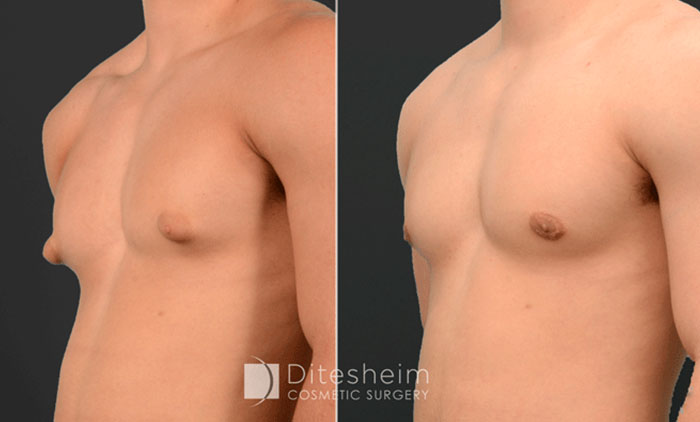
Over the last 25 years, having treated a large number of boys with gynecomastia, Dr. Ditesheim recognizes the decision to have surgery is largely decided by the boy himself. By the time a young boy sees a plastic surgeon with his parents, he has struggled long enough and wants to treat his gynecomastia.
Speak with Dr. Ditesheim About Gynecomastia Surgery for Charlotte Teens
When it persists into the late teen years (16-18), gynecomastia is likely to be persistent and not regress on its own. Fortunately, Dr. Ditesheim knows how to get rid of gynecomastia for teens with minimal scarring. The exceptional staff at Ditesheim Cosmetic Surgery is ready to help you take the first step in your liposuction treatment.
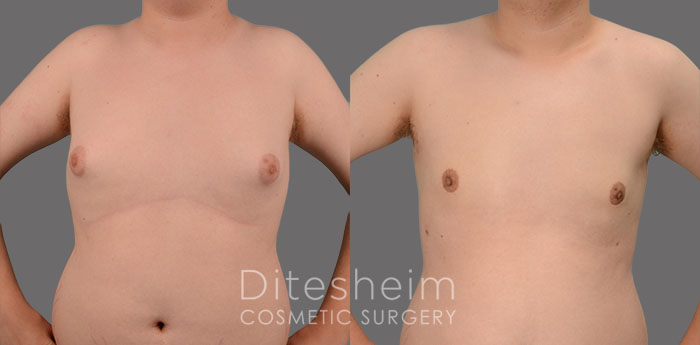
We welcome consultations for gynecomastia treatment for teens in the Charlotte area. In your initial consultation with Dr. Ditesheim, he will talk with you, review your medical history, examine you, and discuss whether male breast reduction surgery is a safe medical treatment for you to consider. Schedule your consultation by calling our office or contacting us online today.


 (704) 542-8686
(704) 542-8686